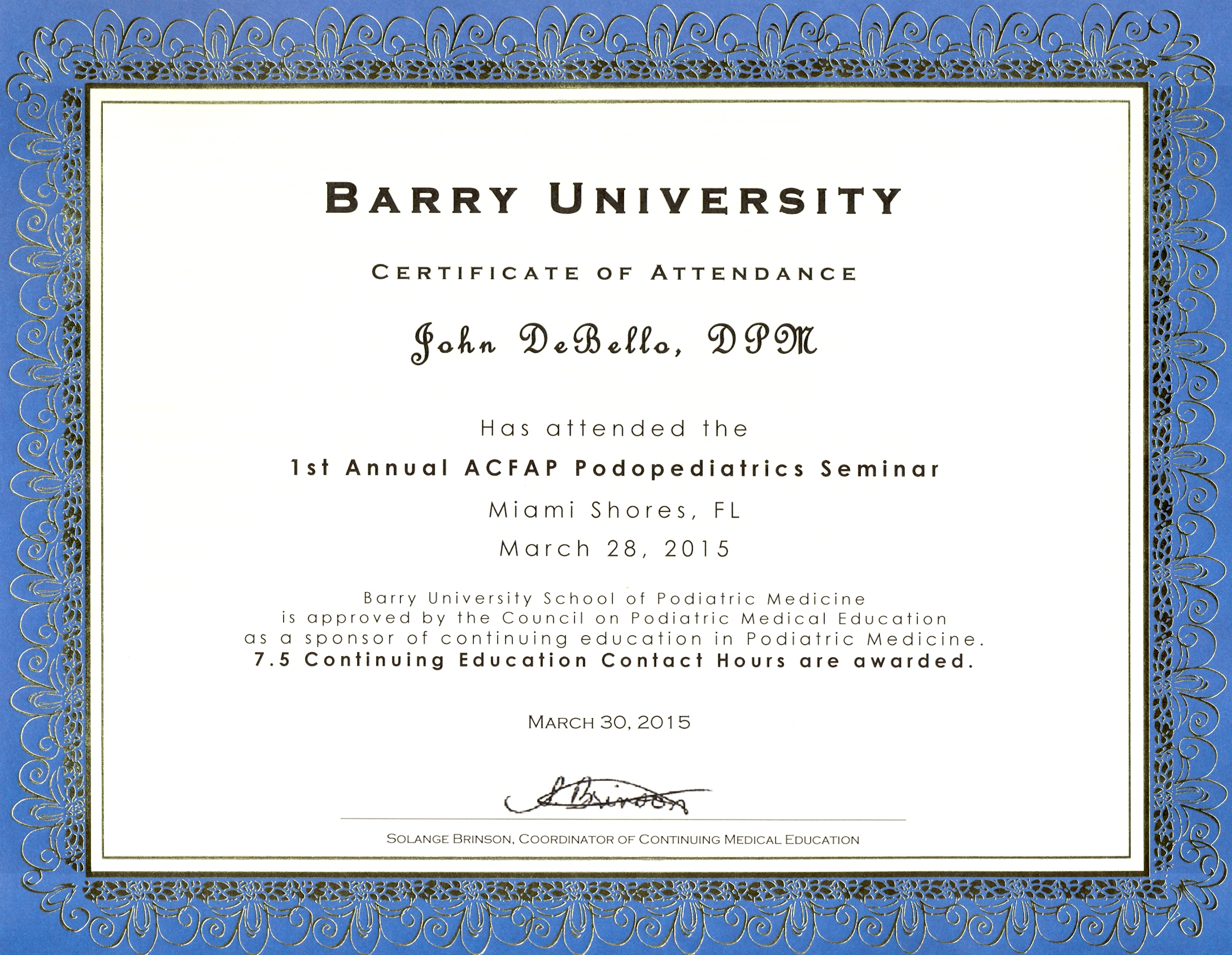Pain in a child’s foot or ankle is never normal. There is no such thing as “growing pains.” A foot and ankle surgeon or podiatrist should evaluate any pain that lasts more than a few days, or that is severe enough to limit the child’s walking.
Does your child have feet that are flatter than normal? Flat feet can lead to pain and long-term damage to the feet. We specialize in the foot problems of children and can treat your child properly.
What is Child Flat Foot?
“Flatfoot” (also known as pes planus) is a condition where the foot lacks an arch on the inside. Arch supports, special shoes, or in-shoe orthotics are necessary.
Immediate problems from flat feet can include:
- Pain of the feet, ankles, knees or back
- Lack of coordination
- Desire not to participate in sports
- A desire to be carried more than other kids their age
- Structural changes in the bones and joints such as formation of bunions or bone spurs
Long term problems related to flat feet can include:
- Development of deformities such as bunions, hammertoes or bone spurs
- Development of arthritis
- Unstable ankles and frequent sprains
- Pain the feet, ankles, knees, hips and back
By evaluating your child’s feet and gait, we can usually determine what kind of problems, if any, your child is likely to suffer because of their flat feet.
The Importance of Family History in Flat Feet Treatment
Another reason to consider treatment of flatfoot is family history. If Dad or Mom, for example, have flat feet and have had a history of foot problems, that are likely related to the flat feet; then we are more likely to use prefabricated or custom orthotics to protect your child’s feet.
If your child is (or is likely to) suffering any problems caused by their flat feet, then treatment will be started. Treatment is aimed at relieving pain, improving gait and preventing future problems. Usually this is by using either prefabricated or custom orthotics. Shoe and exercise recommendations are also common.
How are Flat Feet in Kids Treated?
Treatment usually includes the use of either prefabricated or custom orthotics designed to do the following:
- Support the foot with proper shoes and prefabricated or custom orthotics
- Eliminate pain
- Encourage normal development of the arch
- Prevent pelvic and spinal postural deformities
We will also provide you with information about proper shoes for your child and discuss exercises that can prevent problems.
There is some evidence that early use of orthotics can help encourage normal arch development. If your child is 8 years old or older, the flexible flatfoot can be considered permanent, and long-term use of orthotics will often be required to prevent future problems in the feet, lower extremities, and spine. This is especially true for overweight or athletically active youngsters.
Research on the use of orthotics to treat flat feet is ongoing. An interesting 2014 study showed that after 24 months of using custom orthotics, children with flat feet had more normal looking feet on x-ray. This may indicate that use of orthotics in kids with flat feet can prevent flat foot related problems like bunions and arthritis.
What if One Foot is Flatter than the Other Foot?
Having one foot flatter than the other is a more serious problem as these asymmetrical forces imposed during activities can eventually result in significant cumulative trauma to the foot/ankle complex, knees, hips, and low back. If one foot is flatter than the other foot, the child is more likely to require custom orthotic therapy.
Home Treatment of Child Flatfoot
- Strengthen the child’s lower leg muscles with home exercises, especially Tibialis Posterior, and Internal/External Rotation exercises. Also, have the child perform the towel-gathering exercise (‘scrunching’ a towel lying on the floor with the toes) for 15 minutes daily.
- Insist the child wear supportive shoes with a stable heel (not worn down on either side) and a strong counter (the shoe material that fits around the heel of the foot).
- If excessive pronation and flatfoot are noted to persist as the child matures, correction with custom-made orthotics is indicated.
Shoes for Kids with Flat Feet
Proper shoes are important for the developing foot; but the proper type of shoe is dependent on what type of foot your child has. Kids with flat feet often require a more stable shoe. Be sure to bring a selection of your child’s shoes in when you bring them in to see us for an evaluation.

